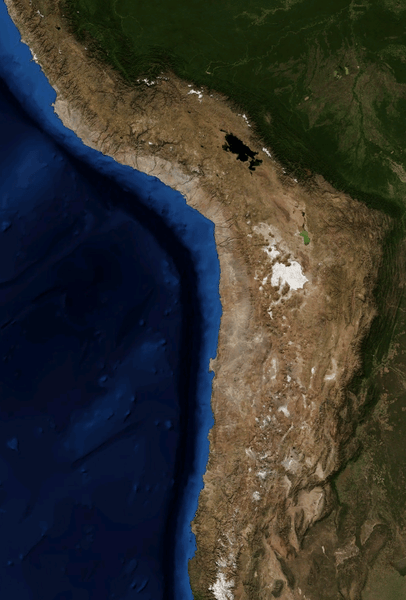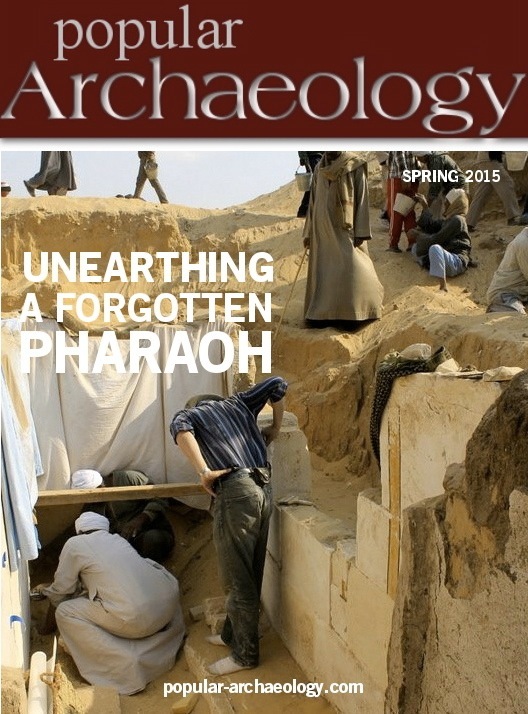
According to a recent study conducted by Jaime Swift of the Australian National University and colleagues from several other institutions in Australia and Chile, a significant part of a pre-Columbian population in northern Chile suffered from slow poisoning due to the intake of arsenic from water sources.
The researchers performed plasma mass spectrometry trace element analysis of human bone and tooth samples from 21 burials excavated at the site of Caleta Vitor on the Pacific coast of northern Chile, a part of the ultra-dry Atacama Desert region. Their tests showed that “the pre-Columbian inhabitants were exposed to elevated levels of arsenic where one third of the sample population had accumulated levels in their skeletal system indicative of chronic poisoning.”*
The time period for sampling spanned c. 3867 to 474 cal BP and included all major cultural periods in the region, showing that the population was exposed to a long-term continuing risk of arsenic poisoning over several millennia.
“Numerous factors may have partially contributed to the population’s inferred poisoning, due to the complex interaction of various environmental sources of arsenic and human behaviours,” wrote the researchers in the report abstract. “Increased exposure to arsenic could relate to climatic variability influencing sources of drinking water or anthropogenic activities such as mining and metallurgy or dietary changes associated with agriculture. Assessment of these potential sources of arsenic toxication, including evaluation of modern environmental data from the region, suggests contaminated drinking water was the most likely cause of arseniasis.”*
____________________________________
 Satellite view of the Atacama Desert along the coast. Wikimedia Commons
Satellite view of the Atacama Desert along the coast. Wikimedia Commons
____________________________________
The results of the research* are published in the Journal of Archaeological Science.
____________________________________
*Jaime Swift, et al., Skeletal Arsenic of the Pre-Columbian Population of Caleta Vitor, Northern Chile, Journal of Archaeological Science, doi:10.1016/j.jas.2015.03.024
_______________________________________________
 You can read our more in-depth articles about new discoveries and developments in archaeology and anthropology with a premium subscription to Popular Archaeology Magazine. Find out what Popular Archaeology Magazine is all about.
You can read our more in-depth articles about new discoveries and developments in archaeology and anthropology with a premium subscription to Popular Archaeology Magazine. Find out what Popular Archaeology Magazine is all about.
In addition, the latest Popular Archaeology ebook is now available.
______________________________________________
Travel and learn with Far Horizons.
____________________________________________
 Popular Archaeology’s annual Discovery Edition eBook is a selection of the best stories published in Popular Archaeology Magazine in past issues, with an emphasis on some of the most significant, groundbreaking, or fascinating discoveries in the fields of archaeology and paleoanthropology and related fields. At least some of the articles have been updated or revised specifically for the Discovery edition. We can confidently say that there is no other single issue of an archaeology-related magazine, paper print or online, that contains as much major feature article content as this one. The latest issue, volume 2, has just been released. Go to the Discovery edition page for more information.
Popular Archaeology’s annual Discovery Edition eBook is a selection of the best stories published in Popular Archaeology Magazine in past issues, with an emphasis on some of the most significant, groundbreaking, or fascinating discoveries in the fields of archaeology and paleoanthropology and related fields. At least some of the articles have been updated or revised specifically for the Discovery edition. We can confidently say that there is no other single issue of an archaeology-related magazine, paper print or online, that contains as much major feature article content as this one. The latest issue, volume 2, has just been released. Go to the Discovery edition page for more information.




